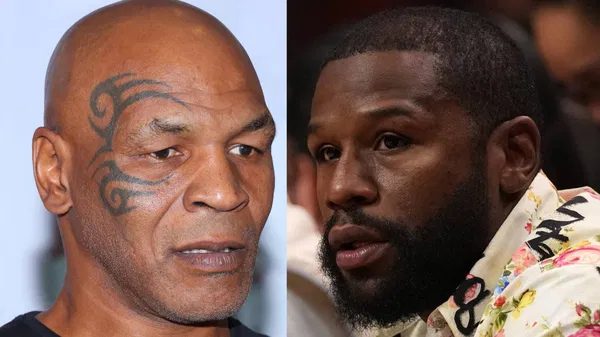
Why Mike Tyson’s Snub From Yardbarker’s Top 25 Pound-for-Pound Boxers List Sparks Controversy
<strong>Mike Tyson Left Out of the Conversation</strong>
Even for those who don’t closely follow boxing, the name Mike Tyson instantly rings a bell. Known as the “Baddest Man on the Planet,” Tyson remains the youngest fighter ever to win a heavyweight title, a record he set at just 20 years old. Across 59 professional bouts, he secured 50 victories—44 of them by knockout. Yet surprisingly, he didn’t make it onto Yardbarker’s list of the top 25 greatest pound-for-pound (P4P) boxers of all time.
<strong>Dominance in the Ring, But No Recognition</strong>
Back in 1987, Tyson became the undisputed heavyweight champion, unifying the WBC, WBA, and IBF titles. He was feared across the sport in the late ’80s and early ’90s, but none of that was enough to earn him a spot on Yardbarker’s elite list. And Tyson wasn’t the only one feeling overlooked.
<strong>Mayweather Ranked Below Lesser-Known Legends</strong>
Floyd Mayweather, widely regarded as one of the greatest defensive boxers ever, did make the list—but at a puzzling No. 17. He was placed behind several fighters such as Pernell Whitaker, Ezzard Charles, Manny Pacquiao, and Marvin Hagler, raising eyebrows among boxing fans who believe Mayweather’s perfect 50-0 record and multiple titles across five weight classes should have earned him a top 10 spot.
<strong>Who Made the Top 10?</strong>
Yardbarker’s ranking, released in February, included legendary names from various boxing eras. The top 10 featured:
1. Sugar Ray Robinson
2. Muhammad Ali
3. Henry Armstrong
4. Harry Greb
5. Willie Pep
6. Roberto Duran
7. Joe Louis
8. Benny Leonard
9. Sugar Ray Leonard
10. Marvin Hagler
Meanwhile, other famous names like Roy Jones Jr., Lennox Lewis, Evander Holyfield, Ricardo López, and Larry Holmes didn’t make the cut either.
<strong>Historical Leaning and Subjective Judgments</strong>
Yardbarker’s list appears to favor boxers with long-term dominance, cross-division success, and historical impact. Fighters like Joe Gans, Archie Moore, and Barney Ross were included, despite being less familiar to modern audiences. This suggests a heavy emphasis on historical appreciation over contemporary influence.
<strong>Why Tyson Might’ve Been Left Out</strong>
Several possible criteria likely influenced Tyson’s exclusion. These may include:
Lack of titles across multiple weight classes (Tyson remained a heavyweight throughout his career).
Key losses to top contemporaries like Evander Holyfield and Lennox Lewis.
A shorter peak compared to others who enjoyed longer, more stable careers.
A technical focus on ring IQ, adaptability, and defense—areas where Tyson wasn’t always seen as elite.
<strong>Mayweather’s Ranking: Fair or Flawed?</strong>
As for Mayweather, while his undefeated record and technical mastery are nearly unmatched, his cautious style and weaker late-career opposition may have factored into his lower ranking. Still, his achievements arguably justify a higher placement.
<strong>The Subjective Nature of Boxing Lists</strong>
Ultimately, rankings like this are subjective. While Tyson and Mayweather have undeniably shaped boxing history, Yardbarker opted for a mix of historical dominance and technical diversity, possibly at the cost of excluding modern icons with more pop-culture appeal.
<strong>What Do You Think?</strong>
Was Yardbarker right to exclude Mike Tyson entirely and place Floyd Mayweather at No. 17? Or did they get it wrong?